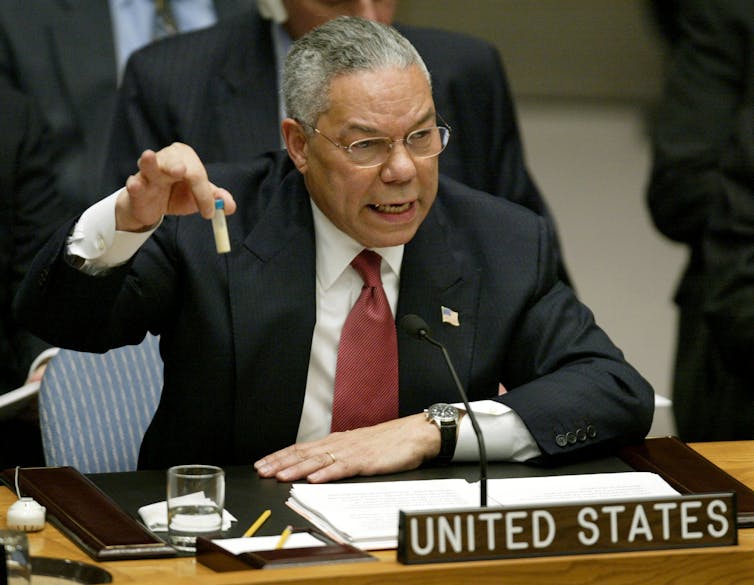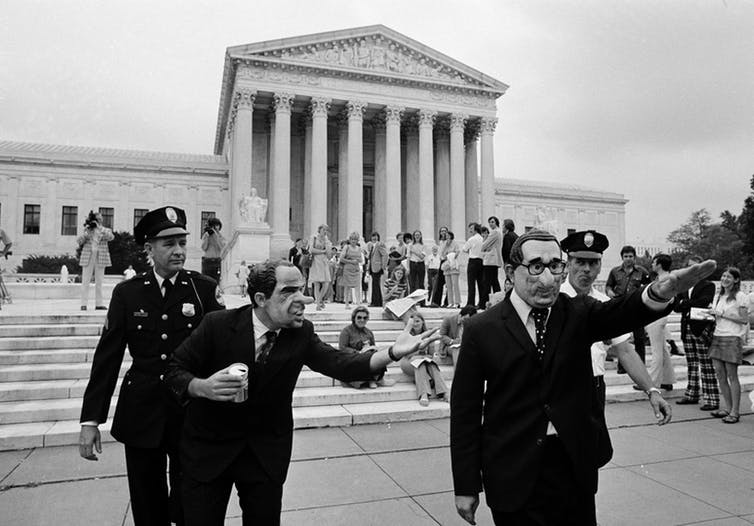by Ian Anson,
Assistant Professor of Political Science, UMBC
White House special counsel Robert Mueller recently issued 12 indictments alleging that Russian intelligence agents sought to tilt the vote in Donald Trump’s favor by hacking prominent Democrats during the 2016 U.S. presidential campaign.
The Trump-Russia investigation has exposed flaws in the American democratic system – so much so that, according to many pundits, people now doubt not just the legitimacy of the Trump administration but the very foundations of the country’s political institutions.
According to a July 2018 Brown University opinion poll, only 16 percent of Americans truly believe their vote matters. Just 4 percent think the government listens to their opinion.
News of Russia’s meddling may have inflamed anti-government sentiment, but skepticism about U.S. democracy is not a new phenomenon.
I am part of a team of scholars from the University of Maryland, Baltimore County that studies American popular support for democracy over time. Historic surveys reveal a deep, long-lasting and bipartisan dissatisfaction with the U.S. government that started over three decades ago.
Measuring trust in government
The gold standard in political opinion polling is the American National Election Study, jointly run by Stanford University, the University of Michigan and the National Sciences Foundation.
Every two years between 1948 and 2016, the survey has asked Americans a variety of questions about their experience with American democracy.
Two of the survey’s questions are particularly useful for measuring public support for democracy.
One asks participants if they believe “people like me don’t have any say in what the government does.” Another asks if they think “quite a few of the people running the government are crooked.”
To understand how satisfaction with the U.S. government has changed over the past 65 years, I examined the percentage of Republicans and Democrats in each election year since 1952 who agreed with those two statements.
Changing public perception of democracy
The results varied widely over time, rising and dropping as the public reacted to political scandals, national tragedies and presidential malfeasance.
In the 1950s, after the U.S. emerged triumphant from World War II, Americans were fairly sanguine about government. In 1956, just 28 percent of people felt they had no say in government. In 1958, only a quarter of Americans saw public corruption as a major problem.
These numbers reflect a remarkable faith in U.S. democracy considering that black Americans and women – both of whom were included in the biannual survey – were still mostly excluded from politics.
Despite the gains of the civil rights movement and the feminist movement that would mark the next decade, the 1970s were so turbulent that they gave rise to an era of political alienation.
By 1974, reacting to the Vietnam War, Watergate and President Gerald Ford’s pardon of a disgraced Richard Nixon, around 41 percent of respondents agreed that they had “no say” in government decision-making.
Almost half – 48 percent – thought crooks were running the government.
Displeasure with American democracy continued to rise for the next three decades, reaching an all-time high under President Bill Clinton.
His administration started with a flurry of scandals. There was 1992’s “Travelgate,” when the White House fired its travel planners for mismanaging funds, followed by the Whitewater investigation into Hillary Clinton’s real estate dealings.
The American public was appalled. In 1994, 50 percent of Democrats and 51 percent of Republicans thought that government officials were mostly corrupt.
These events predated President Bill Clinton’s 1998 affair with intern Monica Lewinsky, which actually appears to have reduced antipathy towards the president.
Americans rally around the flag
Optimism in U.S. democracy resurged to pre-Watergate levels, if only briefly, after the Sept. 11, 2001, World Trade Center attacks.
In 2002, only 26 percent of Americans said they had no voice in government. Just 28 percent thought public corruption was widespread.
This uncritical support for government after a national disaster – often referred to as the “rally around the flag” effect – wouldn’t last long.
Soon, George W. Bush would justify invading Iraq by fraudulently claiming President Saddam Hussein had weapons of mass destruction. By 2008, as Bush’s second term ended, just over half of all Americans were once again convinced of widespread government corruption.

Reuters/Ray Stubblebine
Skepticism about American democracy continued to rise throughout the early Obama years, following the 2010 Citizens United Supreme Court decision, which raised concerns about money in politics, and the crisis surrounding the 2012 terrorist attack on the U.S. Embassy in Benghazi, Libya.
Democratic discontent is bipartisan
One might be tempted to assume that the response to this litany of scandals has been partisan – that people react negatively only to the opposing party’s malfeasance.
But distrusting the government is not actually a particularly partisan issue, surveys show. In recent years, Democrats and Republicans have often differed little on their faith in government.
In the waning days of the Bush administration, 51 percent of Democrats and 45 percent of Republicans expressed concern that their voices were not being heard.
Under President Barack Obama, 69 percent of Republicans thought that most government officials were “crooked.” So did 59 percent of Democrats.
Democrats are somewhat more likely to feel that government is rife with graft and special interests when a Republican is in the White House, and vice versa.
But over the past six decades, Republicans and Democrats have been quite closely aligned in their views of American democracy – at least on these two measures.
Trump and democratic dissatisfaction
The American National Election Study won’t come out again until 2020.
We do not yet know how the Trump White House will impact public support for government.
The Trump administration is already swimming in scandals. In addition to the Russia problem, it has weathered Scott Pruitt’s resignation as head of the Environmental Protection Agency, Housing and Urban Development Secretary Ben Carson’s extravagant taste in furniture and alleged Trump family violations of the Constitution’s emoluments clause.
But the lessons of the past 66 years suggest that highly visible scandals do lead public dissatisfaction with government to rise.
The Watergate era triggered record growth in Americans’ collective dissatisfaction with government.
That record could still be broken.
* * * * * *
Ian Anson, Assistant Professor of Political Science, University of Maryland, Baltimore County
This article was originally published on The Conversation. Read the original article.
Header image: Historically, the high-water mark for American dissatisfaction with government was the 1970s — the era of Vietnam, Nixon and Watergate.
AP Photo/John Duricka

